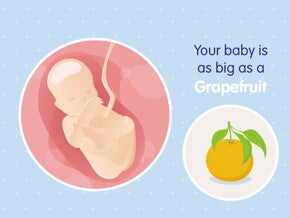
How Often Should Baby Eat – A lot Actually!
Did you know? Your baby may need to eat three meals and two mini meals each day.
Your baby at eight to 10 months old needs to eat more frequently than you. In order to get the nutrients she needs for healthy growth and development, offer your baby small, frequent meals during the day—typically three balanced meals and two nutritious mini meals.
Your little one is active and energetic, but still has a small tummy and needs to eat often. She requires about 700 calories each day, with breast milk providing about half of the calories. Make every bite of food count, to make sure she gets the nutrition she needs. There is no space in her tummy for high-calorie, low-nutrient foods.
Every mouthful matters
“Research shows that by 12 months of age, children get as many as 25% of their calories from snacks, and often from inappropriate foods,” says Kathleen Reidy, DrPH, RD, Head, Nutrition Science and Global Project Leader of the Feeding Infants and Toddlers Study (FITS) at Nestlé Infant Nutrition in New Jersey, USA. “This is why it is so important to make sure to offer healthy choices at every opportunity. Avoid high-calorie, low-nutrient foods, like chips, cookies, and sugary drinks. Concentrate on foods that have a high nutritional value, such as fruits and vegetables, and offer water instead of sugary drinks.”
Sources
Deming DM, Reidy KC, Fox MK et al. Cross-sectional analysis of eating patterns and snacking in the US Feeding Infants and Toddler Study 2008. Public Health Nutr 2017; 20(9):1584-92.
Pan American Health Organization / World Health Organization. Guiding principles for complementary feeding of the breastfed child. Washington DC, Pan American Health Organization / World Health Organization, 2002.
World Health Organization. Complementary feeding. Family foods for breastfed children. Geneva, World Health Organization, 2000.
World Health Organization. Infant and young child feeding: Model chapter for textbooks for medical students and allied health professionals. Geneva, World Health Organization, 2009.


















